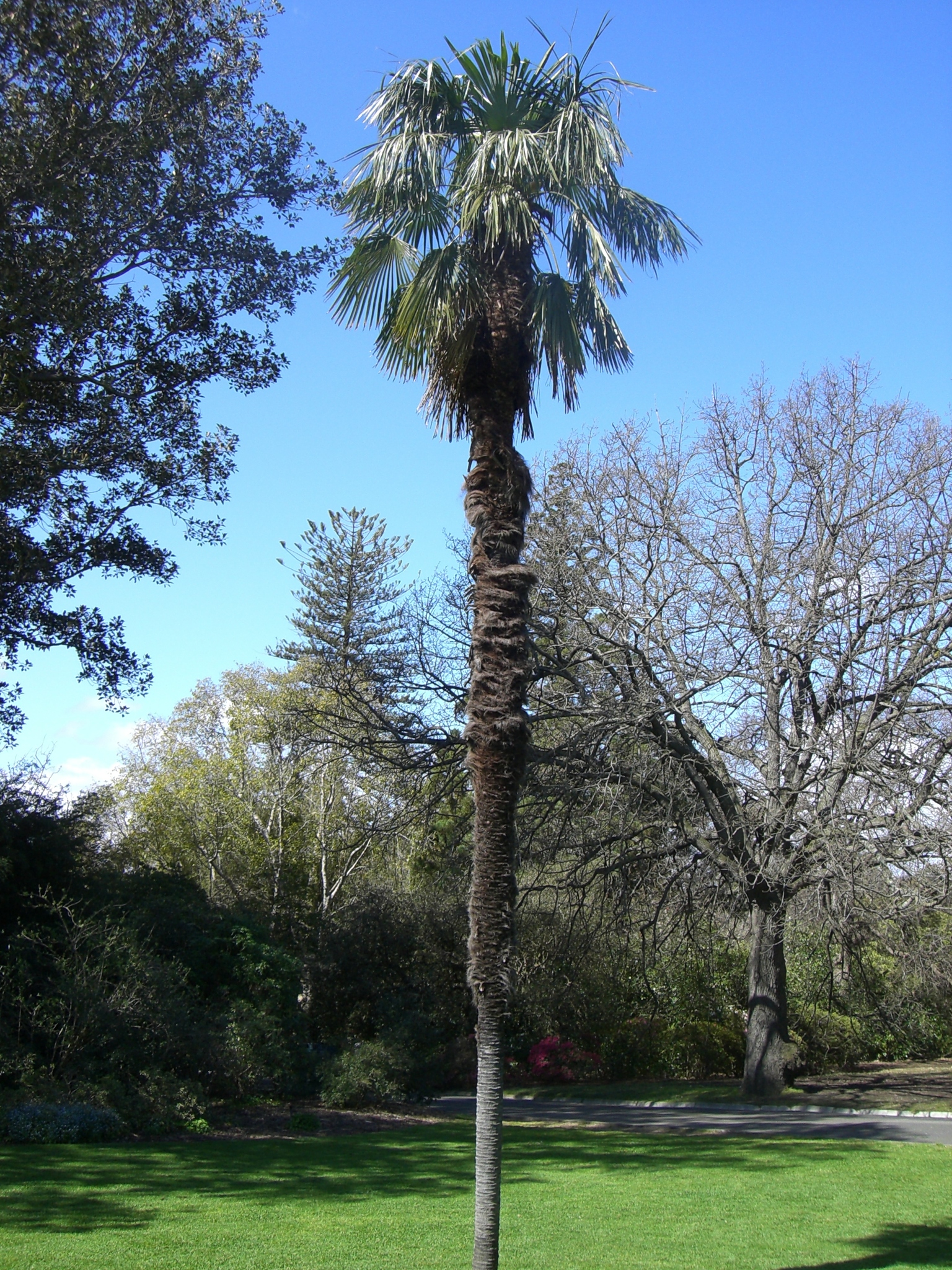
Trunk to 10 m or more tall, covered with tousled, persistent, coarse, brown or black fibre of the leaf sheaths. Leaves stiffly spreading in a rounded or semi-crown, usually with a skirt of dead, hanging leaves. Leaf blades fan-shaped, to over 1 m wide, unevenly divided more than half way, dark green above, green to waxy blue below. Leaflets narrow and generally drooping. Leaf stalk to 1 m long with fine teeth along the margins. Flowers yellow, densely crowded in semi-pendulous clusters. Panicles among the leaves. Fruit about 1.5 cm long, bluish.
China
Occurs in montane forests extending to high altitudes.
One of the most cold tolerant palms, this species is widely planted in temperate regions of the world. Generally slow growing but adaptable, to coastal districts. The trunk fibre is excellent for lining hanging baskets. A popular palm of the nineteenth century. Two variants are occasionally encountered, one with strongly waxy blue leaves and a suckering form sometimes labelled T. caespitosus, which is of horticultural origin. T. wagnerianus Becc., also apparently of horticultural origin, differs from T. fortunei by its smaller leaves with stiff leaflets.
Sturdy fan palm, usually with a single trunk covered with coarse, interlaced fibres and a rounded or semi-rounded crown of stiff, deeply divided leaves which are usually silvery beneath.
ACT: Duntroon (Officer's Mess, "General Bridges Palm. Gift from the Turkish Government in the 1930s and moved to Duntroon in 1988"). NSW: Bathurst (Machattie Park). Vic: Geelong (Geelong Botanic Gardens); Melbourne (Royal Botanic Gardens Victoria (Melbourne Gardens)); Heidelberg (Mount St.); Malmsbury (Malmsbury Botanic Gardens).
T. martianus H.Wendl., Martius' Windmill Palm from India, Nepal and Burma has a trunk to 12 m tall, slender, naked except for an area below the crown covered by appressed fibres. Leaves stiffly spreading in a rounded crown, sometimes with a few dead and hanging leaves. Leaf blades evenly divided about halfway, dark green and shiny above, waxy blue beneath. Flowers yellow, in drooping clusters. Fruit about 1 cm long, black. Occurs naturally in the Himalayan region in forests and shrubland up to 2000 m altitude. Most suitable for temperate and warm temperate regions. An attractive container plant with scope for wider planting. Recognised by the slender woody trunk with fibres just below the crown, and the evenly and deeply divided leaves shiny green above and waxy blue below.
T. takil Becc., Mt Takil Windmill Palm from India has a trunk to 12 m tall, slender, naked except for an area of fibres flattened to the trunk below the crown. Leaves stiffly spreading in a rounded crown, often with a skirt of hanging dead leaves. Leaf blades unevenly divided less than halfway, dark green and shiny above, waxy blue beneath. Flowers yellowish. Fruit about 1 cm long, black, with kidney-shaped seeds. Occurs in the Himalayan region growing in forests up to 2400 m altitude. It has proved very cold tolerant and is well suited to temperate regions. Reported to be relatively fast growing. An attractive container plant. Recognised by the slender woody trunk with fibres just below the crowded and unevenly divided leaves that are shiny green above and waxy blue below.
Source: (2005). Arecaceae. In: . Horticultural Flora of South-eastern Australia. Volume 5. Flowering plants. Monocotyledons. The identification of garden and cultivated plants. University of New South Wales Press.
